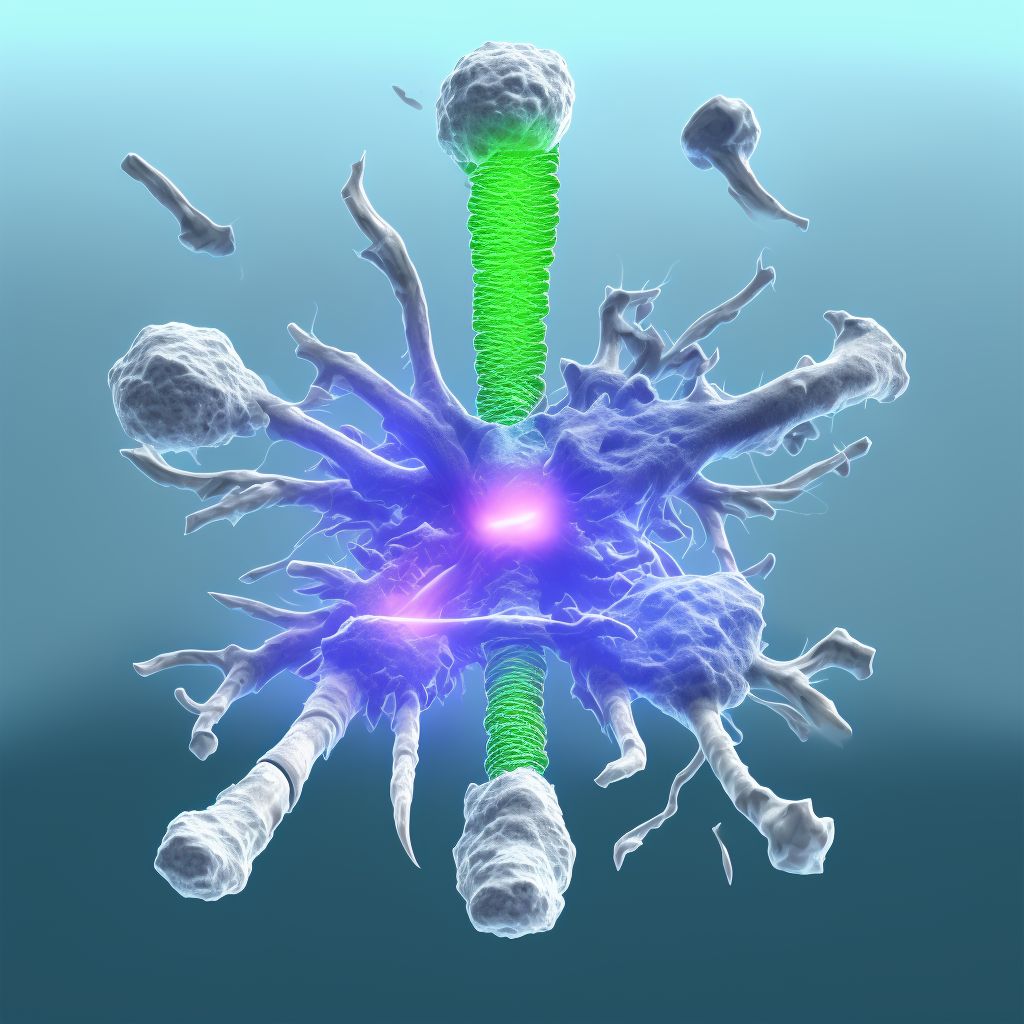
Nondisplaced segmental fracture of shaft of unspecified tibia, initial encounter for open fracture type IIIA, IIIB, or IIIC Save
ICD-10 code: S82.266C
Disease category: S82.266: Nondisplaced segmental fracture of shaft of unspecified tibia
Nondisplaced Segmental Fracture of Shaft of Unspecified Tibia: An Overview
A nondisplaced segmental fracture of the shaft of the tibia is a specific type of bone fracture that occurs in the lower leg. This type of fracture is characterized by a break in the tibia bone that causes the bone to separate into two or more segments without any significant displacement. It is commonly classified as an open fracture type IIIA, IIIB, or IIIC, which refers to the severity of the wound associated with the fracture.
When it comes to the initial encounter for an open fracture, the focus is primarily on assessing and diagnosing the extent of the injury. Medical professionals will evaluate the severity of the wound, determine the type of fracture, and assess any associated complications.
During the initial encounter, medical practitioners will conduct a thorough physical examination, which may include X-rays, CT scans, or other imaging tests to obtain a detailed view of the fracture. These tests help identify the specific location and extent of the nondisplaced segmental fracture and assist in determining the appropriate treatment plan.
Patients with a nondisplaced segmental fracture of the shaft of the tibia may experience symptoms such as pain, swelling, and difficulty bearing weight on the affected leg. Prompt medical attention is crucial to ensure accurate diagnosis and appropriate management.
- Physical examination: A comprehensive examination of the affected leg helps assess the extent of the injury.
- Imaging tests: X-rays or CT scans are commonly used to visualize the fracture and determine its severity.
- Diagnosis: Based on the physical examination and imaging results, medical professionals can diagnose the nondisplaced segmental fracture.
- Treatment planning: Once the fracture is diagnosed, a treatment plan can be developed to address the specific needs of the patient.
In summary, a nondisplaced segmental fracture of the shaft of the tibia is a specific type of bone fracture in the lower leg. The initial encounter for an open fracture type IIIA, IIIB, or IIIC involves a comprehensive assessment and diagnosis to determine the severity of the injury. Prompt medical attention is crucial to ensure proper management and the best possible outcome for the patient.
Treatment of Nondisplaced segmental fracture of shaft of unspecified tibia, initial encounter for open fracture type IIIA, IIIB, or IIIC:
Treatment Options for Nondisplaced Segmental Fracture of Shaft of Unspecified Tibia
A nondisplaced segmental fracture of the shaft of the unspecified tibia can be a significant injury requiring immediate medical attention. This type of fracture occurs when the bone breaks into two or more pieces without causing any displacement. It is commonly classified as type IIIA, IIIB, or IIIC...
To see full information about treatment please Sign up or Log in